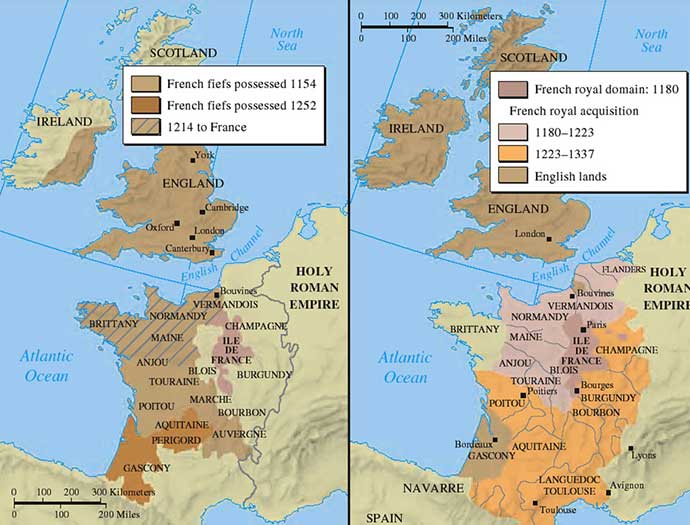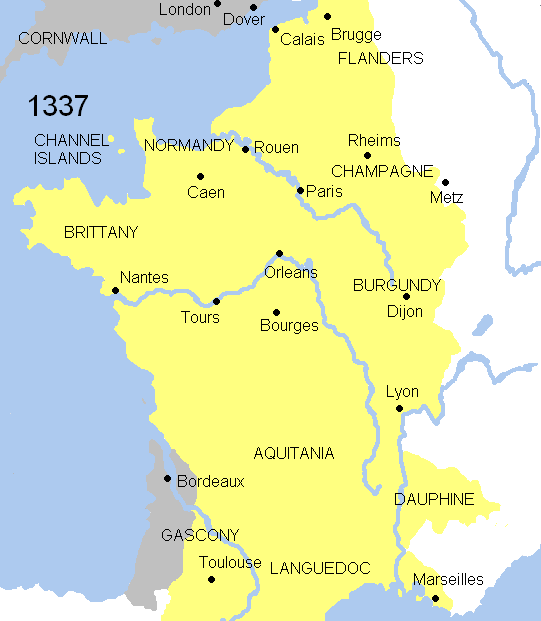
The 100 Years War was the longest and messiest break up in history. For 200 years, since the Norman invasion, England had been inextricably linked to France. Its Kings were French and the language of its nobility was French.
The vassal King of England
 Listen Now
Listen NowEnglish Kings even held Dukedoms in French territories, which made them vassals of the French King. They even had to pay homage to the King in France in return for their lands. Although equal in theory there was no doubting who was boss. The 100 Years War changed all that.
It began with Edward III, a young firebrand of a King who had inherited the throne when his French mother Isabella overthrew his father, Edward II, and packed him off into a dungeon where he died in mysterious circumstances.
As a young King, Edward would first have to throw off the overbearing influence of his mother who spent the early years of his reign ruling through him. However, when he had managed that, he was quick to start on the rest of the French nation.
Contested French lands
 Listen Now
Listen NowThe routes of the trouble – as so often – lay in land. Ever since William the Conqueror, who was Duke of Normandy before 1066, English Kings had held land in France. William’s great grandson Henry II inherited Anjou, and Aquitaine (Gascony and Poitou).
These possessions were the source of constant friction between the French and English which often erupted into full scale war. Henry’s son John lost Anjou and Aquitaine and nearly all of England in war with Phillip II. The English monarchs retained control only over a small area around Gascony.

A map of French influence in Europe prior to The 100 Years War.
In May 1337 things came to a head when King Phillip VI confiscated Gascony from Edward. Edward responded in a way which Phillip could not have foreseen and declared himself the rightful King of England and France.
The outbreak of war
This revived an old argument which had been running for years. When the old King of France, Charles IV died, a claim was made on behalf of Edward – who was then 15 – through his mother Isabella who was Charles’ sister. However, Edward was passed over.
Whether he really thought he could become King of France – or if this was just a strategy to whip up discontented gentry in France or as a way of giving him a strong bargaining position is not clear. Either way, it made war all the more likely.
The next 100 years were to see England and France locked in continuous battle, with the balance of power swinging first one way and then the other.

An animated map of the Hundred Years War. This map shows the war`s evolution and the most important battles.
Edward himself would go down in history thanks to a series of crushing victories in Crecy and Poitiers which saw him hailed as the ideal medieval king. Although not all of the gains England would make lasted, the war changed forever the nature of the relationship between England and France, and paved the way for little England to emerge as a major power in Europe.














